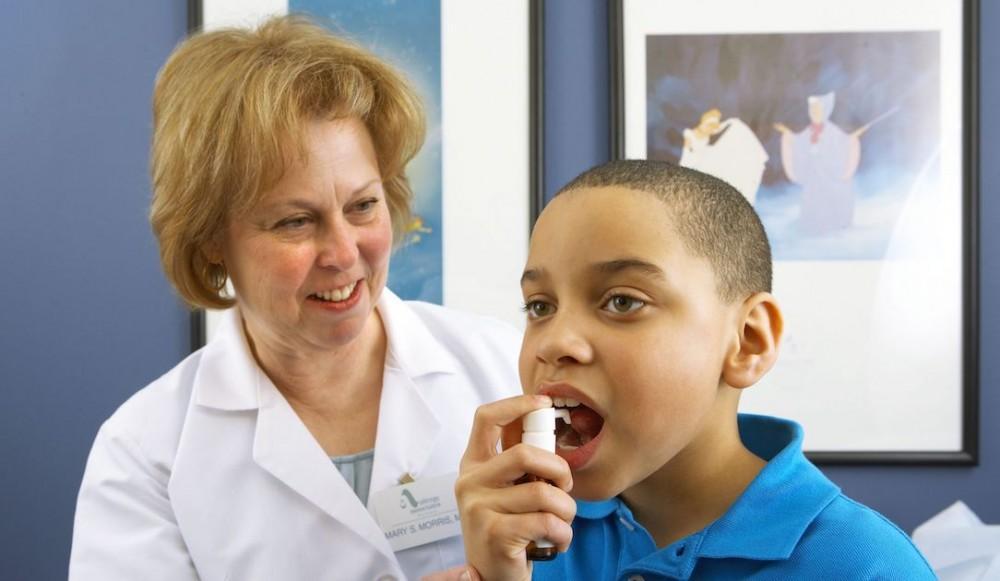
It’s a War on Pollen during Spring Allergy Season

Santa Monica, CA –
While many people eagerly anticipate spring to see the last of cold weather and snow drifts, others dread the sneezing, wheezing, itchy eyes and coughing spring allergies bring. They understand the arrival of pollen – whether counts are high or low - means the onset of their misery. But there are ways to prevail in the fight to breathe easy and remain relatively sneeze-free.
“People focus on the highs and lows of pollen counts,” said allergist Dr. Bernard Geller, Allergy & Clinical Immunology Medical Group. “What they don’t realize is that a high total pollen count doesn’t always mean you will have allergy symptoms. The pollen from the plant you are allergic to may not be high. The key is to know what you’re allergic to, and how to treat your particular symptoms.”
More people than ever suffer from allergies of all kinds. Allergies are the 6th leading cause of chronic illness in the U.S. with an annual cost in excess of $18 billion. One in five Americans suffer from allergies each year. And though spring can bring lots of sneezing and sniffles, it’s important to remember that there are tools at your disposal – whether your suffering is mild or severe.
Following are some tips from the American College of Allergy, Asthma and Immunology to keep in mind as you work to keep your spring allergy symptoms under control.
- Heading symptoms off at the pass – One thing that many allergy sufferers may not be aware of is that if you start taking your prescription allergy medications before the worst symptoms hit, your suffering will be greatly alleviated. Although people think of spring starting in April or May, spring allergy symptoms start earlier, so it benefits you to start taking your prescription allergy medications two to three weeks before your symptoms normally appear.
- Early spring is awesome? Not so fast – Although it may seem like a good sign when the winter weather appears to be clearing up early, it’s not good news for allergy sufferers. A mild winter can cause early release of pollens from certain trees. Once allergy sufferers are exposed to early pollen, their immune system is primed to react to allergens, and there will be little relief, even if temperatures cool down again before spring has sprung for good. If the weather report calls for a streak of warm days, begin taking your medication.
- Location, location, location –Though some areas of the country tend to get hit harder than others, tree pollens are bad in all geographic regions. Tree pollen first appears in February, even in the coldest climates, and peaks twice – in March and April. Your response to pollen can depend on which pollens you’re allergic to. If you’re someone who is allergic to tree pollen or grass, you may experience an increase in symptoms no matter where you live.
- Just like every snowflake is different – No two allergy sufferers have the same set of allergic responses, so you have to treat your allergies according to your symptoms. While some people may be able to treat their mild allergies with over-the-counter medications, many people benefit from seeing a board-certified allergist who can diagnose exactly what they’re allergic to, and create a personal treatment plan.
While there isn’t a cure for spring allergies, there are many treatments an allergist can prescribe and/or provide. For more severe symptoms, two types of immunotherapy are available: allergy shots and tablets.
Allergy shots: An immunotherapy treatment program consists of injections of a diluted allergy extract, administered frequently in increasing doses until a maintenance dose is reached. Immunotherapy helps the body build resistance to the effects of the allergen, reduces the intensity of symptoms caused by allergen exposure and sometimes can actually make skin test reactions, and your allergy, disappear.
Tablets: This type of immunotherapy was approved by the Food and Drug Administration in 2014. Starting at least three months before allergy season begins, patients dissolve a tablet under the tongue daily. Treatment can continue for as long as three years. Only two allergens (grass and ragweed pollens) can currently be treated with this method, but it is may be a good option for patients with grass pollen allergy not controlled with medications.
Dora Afrahim, MPAP, PA-C
Allergy & Clinical Immunology Medical Group
For more information about treatment of allergies and asthma, visit our website at www.SneezeWheeze.com, or reach us by telephone: (310)828-8534 or by e-mail: FrontOffice@allergyandclinical.com
You Might Also Enjoy...


FDA Approves the First Peanut Allergy Treatment

Telehealth: The Advantages of Telemedicine

Four Tips to Help you Stay Calm and Ease Sniffling, Sneezing, & Wheezing this Holiday Season

Keeping Allergies and Asthma at Bay is the Best Gift



